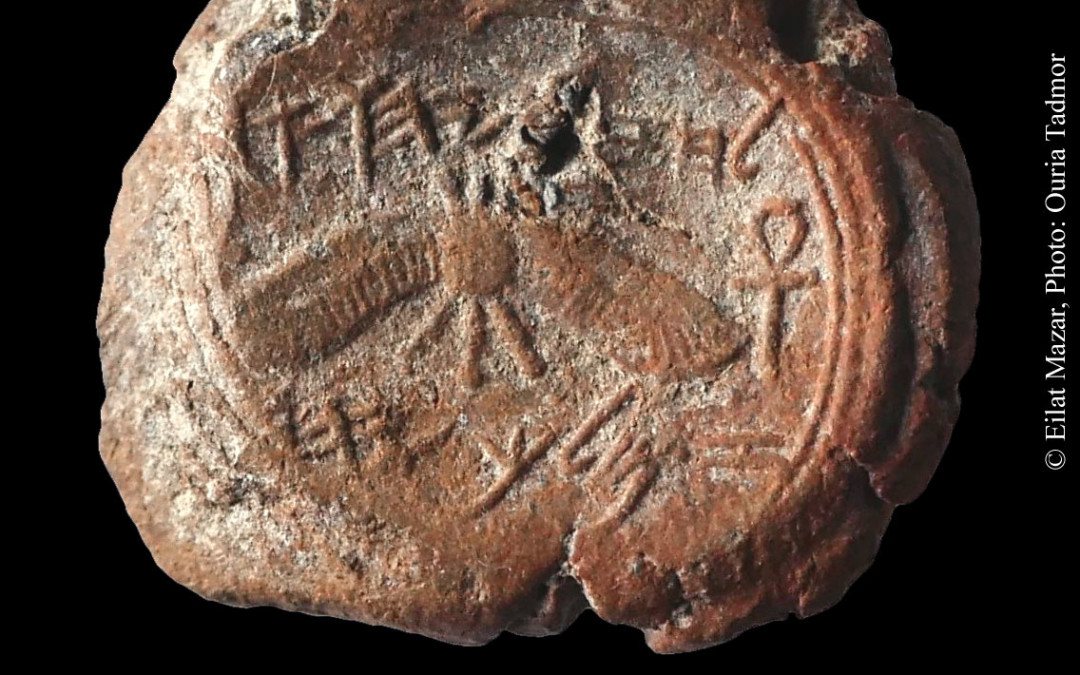In the third year of Israel’s King Hoshea son of Elah, Hezekiah son of Ahaz became king of Judah. He was 25 years old when he became king and reigned 29 years in Jerusalem.
– 2 Kings 18:1-2 (HCSB)


Archaeologists under the directorship of Dr. Eilat Mazar on behalf of the Hebrew University in Jerusalem have recently uncovered and deciphered an impression made by a royal seal of King Hezekiah. He was Judah’s 13th king who ruled from about 727–698 BC. In the ancient world seals were used to stamp an emblem onto clay or other materials. This is the first time a seal impression for any king of Israel or Judah has ever been found in a controlled archaeological context. This impression is about half the size of a USA dime and provides more understanding of the daily life and setting of biblical events.
The rest of the events of Hezekiah’s reign, along with all his might and how he made the pool and the tunnel and brought water into the city, are written in the Historical Record of Judah’s Kings.
– 2 Kings 20:20 (HCSB)
Many travelers to Jerusalem are familiar with Hezekiah because of the popularity of Hezekiah’s Tunnel (Siloam Tunnel), which still displays the remarkable craftsmanship used more than 2700 years ago to carve an underground passage bringing water into the city of David, sustaining it during times of siege.
These finds come from a biblical period that is widely accepted to be historical with many links between archaeology and the Bible. However, in the eyes of most mainstream scholars these links tend to vanish when going back in times of Kings Solomon, David, the Conquest and Exodus. Some scholars say that because evidence is lacking,the Bible’s account in these earlier periods must just be myth.
However, others are pointing to evidence that they believe is being overlooked because of assumptions that put these events at the wrong time period in history. And if you look in the wrong time, you won’t find any evidence.
For more information on Hezekiah’s seal go to: http://new.huji.ac.il/en/article/28173



